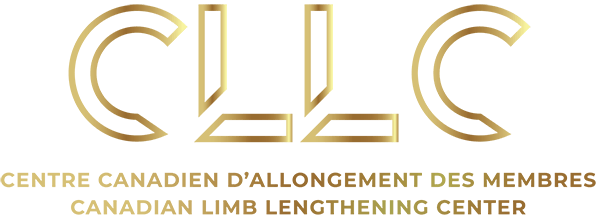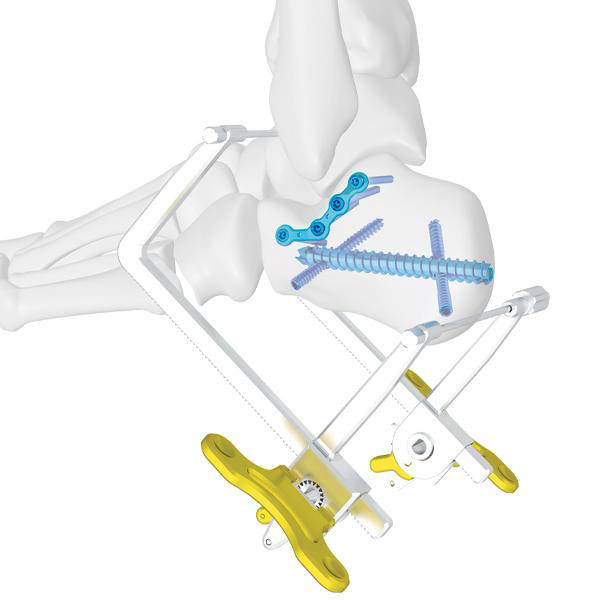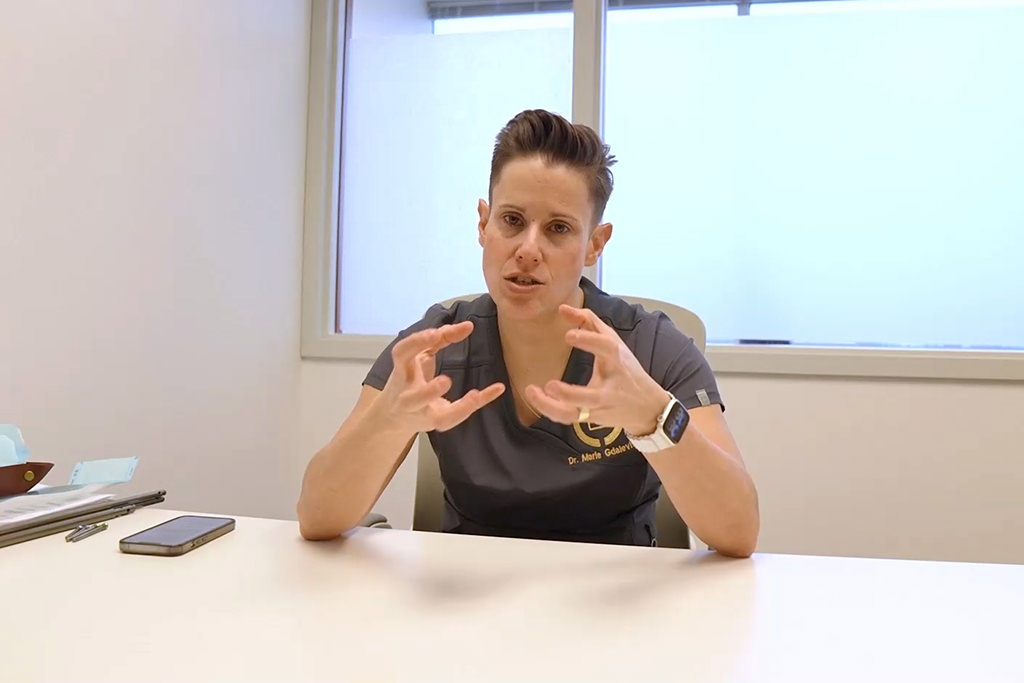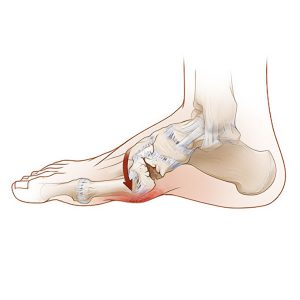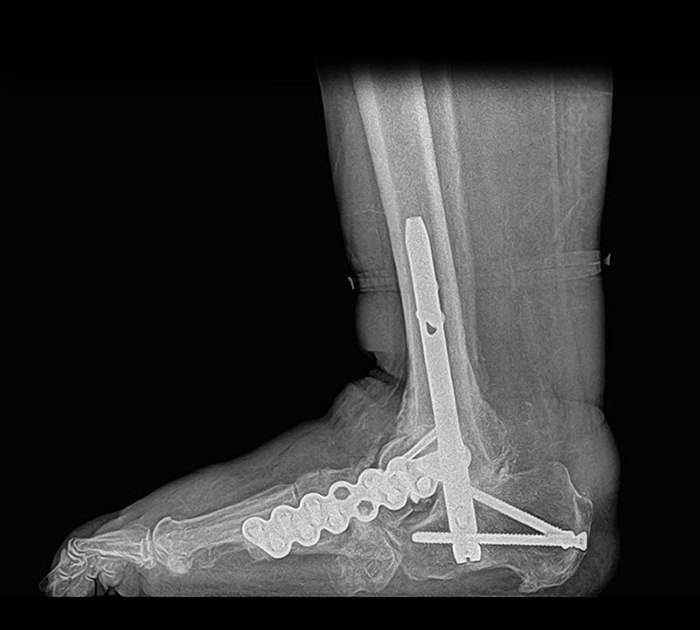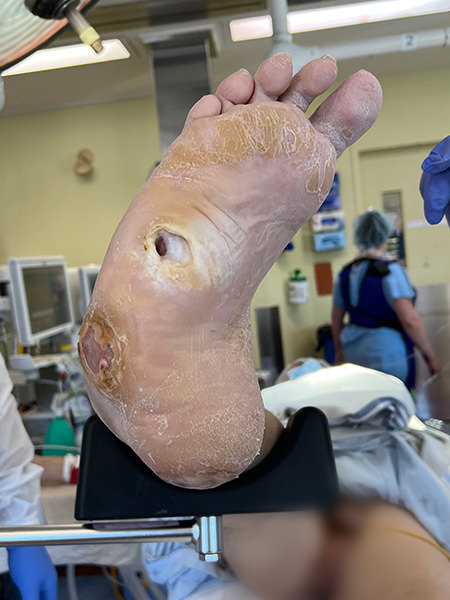Charcot Foot is defined as a neuropathy induced condition which results in the weakening of the ankle joint, and ultimately the flattening of the feet. With this condition patients lose some of the protective sensations in the foot, that then leads to destruction of foot, ankle joints and surrounding bone. Hindfoot, midfoot fusions with internal and/or external fixation can be used to restore balance in the foot and reduce pain for our patients. This type of fusion (arthrodesis) involves the permanent stiffening of the bones, together with plates, screws, staples and external fixators.
Indications / Candidacy
Charcot joint usually occurs secondary to an underlying neuropathy (nerves do not function properly) and results in destruction of joints, often in the foot in ankle but this can occur in other joints as well. This condition may affect patients with Diabetic Neuropathy who have reduced sensation or difficulty feeling their extremities. It has also been linked to conditions such as syphilis, alcoholism, peripheral nerve injuries, and spina bifida.
Because diabetic neuropathies often affect patients’ legs, the foot and ankle are common locations for Charcot joints.
Good Candidates for hindfoot and midfoot fusions for charcot joints with internal and or external fixation may have:
- Healed Charcot with underlying deformities of the foot and ankle
- Ulceration secondary to underlying foot deformities
- Un-shoeable foot deformities
- Failure to respond to more conservative treatment measures



Treated Conditions
The Canadian Limb Lengthening Center offers a team of experienced surgeons, nurses and physiotherapists that make patients feel supported throughout their entire treatment process. Our ability to treat complex orthopedic conditions with a holistic approach gives our patients the best possible outcomes. We pride ourselves in providing highly specialized, expert care. To learn more about Charcot foot follow the link below:
Surgical Technique
Hindfoot, midfoot fusions can be performed using internal and or external fixation. Internal fixation devices may include plates and screws, and solid intramedullary fusion bolts to stabilize the bones. External fixation may include a unilateral, ring, or hybrid fixators that stabilize the bone with hardware that is found outside the body. The type of fixation used may depend on a patient’s bone quality but often a combination of internal and external fixation is used. In some cases, a two-stage fixation strategy may be employed to first correct deformity.
Results
A normal side effect from ankle, hindfoot, midfoot fusions is reduced range of motion in the joint. For most patients this isn’t a major problem, as they are happy to have minimized or eliminated pain and correction of their deformity. Pain relief and deformity correction allows most patients to return to some activities, increase function and mobility, a higher tolerance for walking and a better quality of life. A full recovery may take up to twelve months.

Potential Complications
As with any surgical procedure, hindfoot and midfoot fusions with internal and or external fixation can have difficulties and complications. In most cases, our team of specialists can address these concerns without compromising the end results or outcome. Complications and side effects may include:
- Pin site Infection
- Non-union or wound healing problems
- Damage to nearby nerves
- Blood clot
- Fixation failure
- Continued deformity of the foot and ankle
- Arthritis or destruction of nearby joints
AM I A CANDIDATE?
Are you experiencing an orthopedic condition and would like to improve your physical capabilities?
Or you simply would like to achieve your long-lasting dream of improving your height?
Let us help you achieve your optimal health and wellness in a professional setting.
Let’s open up a discussion to help you achieve your goals.




Highly specialized expert care at CLLC
At the Canadian Limb Lengthening Centre we offer complex deformity correction and limb lengthening surgeries performed by experienced surgeons with the most up to date technologies. When it comes to your care, and treatment of deformity and limb length discrepancy, our surgeons have extensive training and experience.
